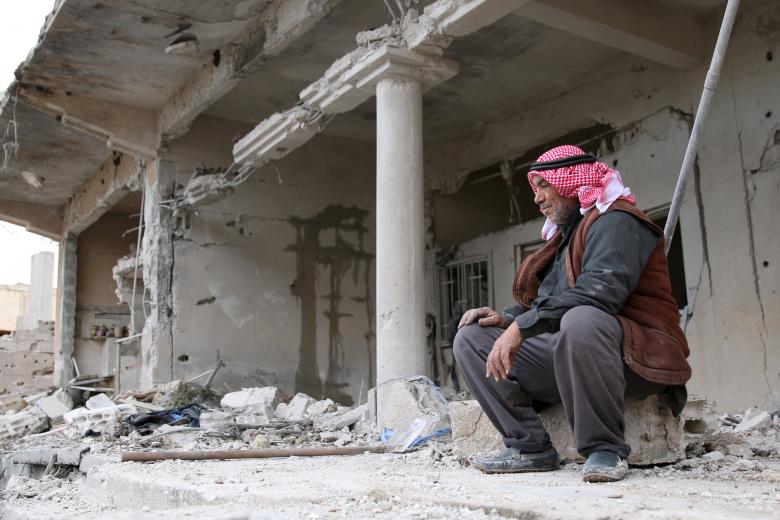Washington – The conflict in Syria has inflicted significant damage to Syria’s physical capital stock with 7 percent housing stock destroyed and 20 percent partially damaged, according to a report published by the World Bank on Monday.
According to the report “The Toll of War: The Economic and Social Consequences of |The Conflict in Syria”, physical destruction is more noticed, but the “invisible” effects, such as disruptions in economic networks, increased rent seeking, and the erosion of social trust, play a greater role in explaining the collapse in economic activity.
The World Bank added that six-years of conflict has ravaged Syria’s infrastructure and caused losses to its economy of $226 billion, and led to large numbers of casualties and forced displacement.
The numbers estimate there are between 400,000 and 470,000 deaths and more than half of Syria’s 2010 population forcibly displaced.
“Syria has become the largest forced displacement crisis in the world since World War II,” described the report.
In addition, the report stated that from 2011 until the end of 2016, the cumulative losses in gross domestic product (GDP) have been estimated at $226 billion, about four times the Syrian GDP in 2010, and Syrian exports reduced by 92 percent between 2011 and 2015.
The World Bank said the destruction ran much deeper than death tolls or infrastructure damage alone could capture.
“The war in Syria is tearing apart the social and economic fabric of the country,” World Bank Vice President for the Middle East and North Africa Hafez Ghanem said in a statement.
“The number of casualties is devastating, but the war is also destroying the institutions and systems that societies need to function, and repairing them will be a greater challenge than rebuilding infrastructure, a challenge that will only grow as the war continues,” he said.
Rapidly shrinking job opportunities and scaled down social security programs have further aggravated a mounting humanitarian crisis. Since the onset of the conflict, jobs were destroyed at an estimated rate of approximately 538,000 per year on average between 2010 and 2015, adding 482,000 people to the unemployment pool every year.
“Unemployment among youth reached 78 percent in 2015,” the report stated.
Similarly, the destruction of the existing health infrastructure has led to a deterioration of health status across the country, with a reemergence of communicable diseases, heightened impact of noncommunicable diseases, and increasing burden of injuries.
The damage to the health sector has also had devastating effects, with the World Bank saying more people were estimated to have died from deficiencies in the medical system than directly from fighting in the war.
Educational system has also been affected due to the war now that education facilities have become military bases and targets during the conflict.
Schools have been used as military quarters and informal shelters for displaced community members
The report also mentioned that available evidence suggests that physical damage to the electricity infrastructure has been severe, but not devastating: all the country’s hydroelectric dams and six of 18 power plants remain operational, while four more power plants are partially damaged, and one has been destroyed.
“However, fuel shortages and conflict-driven constraints to operation and maintenance have led to a sharp drop in public power supply,” according to the World Bank.
It is worth mentioning that since 2011, all Bank operational activity and missions to Syria were halted.
However, the Bank monitors the impact of the conflict on the Syrian people and the economy. It also dialogues regularly with the international community working on Syria in an effort to make sure it is ready to support post-conflict recovery efforts.
